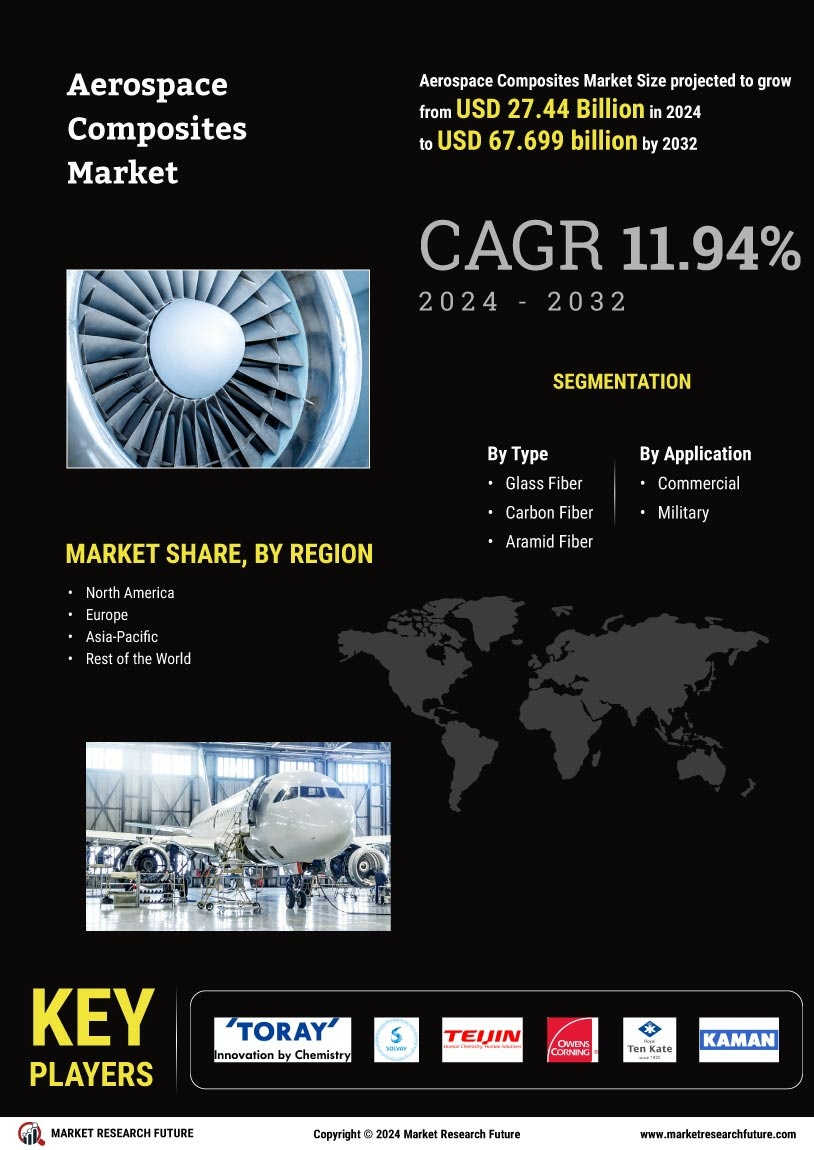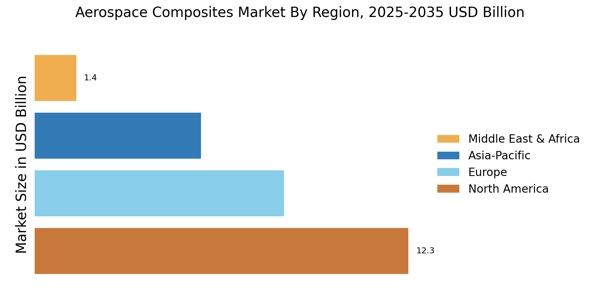Rising Investment in Aerospace R&D
The Aerospace Composites Market is benefiting from a significant increase in investment directed towards research and development in aerospace technologies. This influx of funding is facilitating the exploration of new composite materials and manufacturing techniques that enhance performance and durability. Notably, government and private sector investments are focusing on developing advanced composites that can withstand extreme conditions while maintaining lightweight properties. As a result, the Aerospace Composites Market is likely to see a proliferation of innovative products that cater to the evolving needs of the aerospace sector. This trend not only fosters technological advancements but also strengthens the competitive landscape among manufacturers.
Expansion of Aerospace Applications
The Aerospace Composites Market is witnessing an expansion in the range of applications for composite materials beyond traditional aircraft structures. Emerging sectors such as unmanned aerial vehicles (UAVs) and space exploration are increasingly utilizing composites for their lightweight and high-strength characteristics. The versatility of composite materials allows for their integration into various components, including wings, fuselages, and interiors. As the demand for UAVs and space vehicles grows, the Aerospace Composites Market is expected to capitalize on these opportunities, driving further innovation and market growth. This diversification of applications is likely to enhance the overall resilience and adaptability of the Aerospace Composites Market.
Advancements in Manufacturing Technologies
The Aerospace Composites Market is poised for transformation due to advancements in manufacturing technologies. Innovations such as automated fiber placement and 3D printing are revolutionizing the production processes of composite materials, enabling faster and more cost-effective manufacturing. These technologies not only enhance the precision and quality of composite components but also reduce waste and energy consumption. For instance, the implementation of additive manufacturing techniques is expected to decrease production times by up to 50%, thereby accelerating the time-to-market for new aircraft designs. As these technologies continue to evolve, they are likely to play a pivotal role in shaping the Aerospace Composites Market, driving efficiency and sustainability in aerospace manufacturing.
Growing Focus on Environmental Regulations
The Aerospace Composites Market is increasingly influenced by stringent environmental regulations aimed at reducing the carbon footprint of aviation. Governments and regulatory bodies are implementing policies that encourage the use of sustainable materials and practices in aircraft manufacturing. This regulatory support is prompting aerospace manufacturers to invest in composite materials that not only meet performance standards but also align with environmental goals. For example, the introduction of regulations targeting emissions reductions is likely to accelerate the adoption of lightweight composites, which contribute to lower fuel consumption. As compliance with these regulations becomes imperative, the Aerospace Composites Market is expected to expand, driven by the need for innovative and eco-friendly solutions.
Increasing Demand for Lightweight Materials
The Aerospace Composites Market is experiencing a notable surge in demand for lightweight materials, driven by the need for fuel efficiency and reduced emissions in aircraft design. Composites, such as carbon fiber reinforced polymers, offer significant weight savings compared to traditional materials like aluminum. This shift is particularly evident in commercial aviation, where airlines are increasingly adopting composite materials to enhance performance and lower operational costs. According to recent data, the use of composites in aircraft structures is projected to reach approximately 50% by 2030, indicating a robust trend towards lightweight solutions. As manufacturers strive to meet these demands, the Aerospace Composites Market is likely to witness substantial growth, fostering innovation and competition among key players.


















Leave a Comment